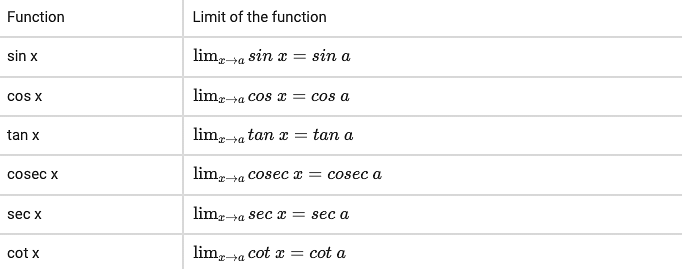lim(x→0)\((\frac {1+tanx}{1+sinx})^{cosec x}\) = ?
lim(x→0)\((\frac {1+tanx}{1+sinx})^{cosec x}\) = ?
- 0
- e
- 1
\(\frac {1}{e}\)
The Correct Option is C
Approach Solution - 1
Let's consider the limit as x approaches 0:
lim(x→0) \((\frac {1+tanx}{1+sinx})^{cosec x}\) as x approaches 0
Substituting x = 0 into the expression gives us:
\((\frac {1+tan(0)}{1+sin(0)})^{cosec (0)}\)
Since tan(0) = 0 and sin(0) = 0, we have:
\((\frac {1+0}{1+0})\)(cosec 0)
Simplifying further:
1(cosec 0)
1
Therefore, the correct option is (C) 1.
Approach Solution -2
\(\lim_{x \to 0} \left( \frac{1 + \tan x}{1 + \sin x} \right)^{\cosec x}\)
we can use approximations and simplifications. Here's a streamlined approach:
Approximate tan x and sin x for small x:
\(\tan x \approx x\)
\(\sin x \approx x\)
Rewrite the expression using these approximations:
\(\frac{1 + \tan x}{1 + \sin x} \approx \frac{1 + x}{1 + x} = 1\)
Consider the entire expression:
\(\left( \frac{1 + \tan x}{1 + \sin x} \right)^{\cosec x} \approx 1^{\cosec x}\)
Note that \(\cosec x = \frac{1}{\sin x}\), and for small x, \(\sin x \approx x\):
\(\cosec x \approx \frac{1}{x}\)
Substitute \(\cosec x \approx \frac{1}{x}\) into the expression:
\(1^{\cosec x} \approx 1^{\frac{1}{x}}\)
Recognize that 1 raised to any power is still 1:
\(1^{\frac{1}{x}} = 1\)
So, the correct option is (C): 1
Top Questions on limits and derivatives
- Find the derivative: \[ \frac{d}{dx} \left[ \left| \frac{x}{4} \right| \right] \]
- Bihar Board XII - 2025
- Mathematics
- limits and derivatives
- Find the derivative of \[ \frac{d}{dx} \left( \lim_{n \to 1} \frac{x^n - 1}{n+1} \right). \]
- Bihar Board XII - 2025
- Mathematics
- limits and derivatives
- Find the derivative of \( \log(x^9) \).
- Bihar Board XII - 2025
- Mathematics
- limits and derivatives
- \(\frac{d}{dx} \left[ \log x^2 + \log a^2 \right] \)
- Bihar Board XII - 2025
- Mathematics
- limits and derivatives
Let $\left\lfloor t \right\rfloor$ be the greatest integer less than or equal to $t$. Then the least value of $p \in \mathbb{N}$ for which
\[ \lim_{x \to 0^+} \left( x \left\lfloor \frac{1}{x} \right\rfloor + \left\lfloor \frac{2}{x} \right\rfloor + \dots + \left\lfloor \frac{p}{x} \right\rfloor \right) - x^2 \left( \left\lfloor \frac{1}{x^2} \right\rfloor + \left\lfloor \frac{2}{x^2} \right\rfloor + \dots + \left\lfloor \frac{9^2}{x^2} \right\rfloor \right) \geq 1 \]
is equal to __________.
- JEE Main - 2025
- Mathematics
- limits and derivatives
Questions Asked in MHT CET exam
- If \( \tan^{-1} (\sqrt{\cos \alpha}) - \cot^{-1 (\cos \alpha) = x \), then what is \( \sin \alpha \)?}
- MHT CET - 2025
- Trigonometric Identities
- Evaluate the integral: \[ \int \frac{1}{\sin^2 2x \cdot \cos^2 2x} \, dx \]
- MHT CET - 2025
- Trigonometric Identities
- A body of mass 0.2 kg is attached to a light string of length 1 m and revolved in a vertical circle. What is the minimum speed at the lowest point so that the body can complete the circular motion? (Take \( g = 10 \, \text{m/s}^2 \))
- MHT CET - 2025
- centripetal acceleration
- Evaluate the integral: \[ \int \frac{\sqrt{\tan x}}{\sin x \cos x} \, dx \]
- MHT CET - 2025
- Integration
- A die was thrown \( n \) times until the lowest number on the die appeared. If the mean is \( \frac{n}{g} \), then what is the value of \( n \)?
- MHT CET - 2025
- Probability
Concepts Used:
Limits of Trigonometric Functions
Assume a is any number in the general domain of the corresponding trigonometric function, then we can explain the following limits.

We know that the graphs of the functions y = sin x and y = cos x detain distinct values between -1 and 1 as represented in the above figure. Thus, the function is swinging between the values, so it will be impossible for us to obtain the limit of y = sin x and y = cos x as x tends to ±∞. Hence, the limits of all six trigonometric functions when x tends to ±∞ are tabulated below:
